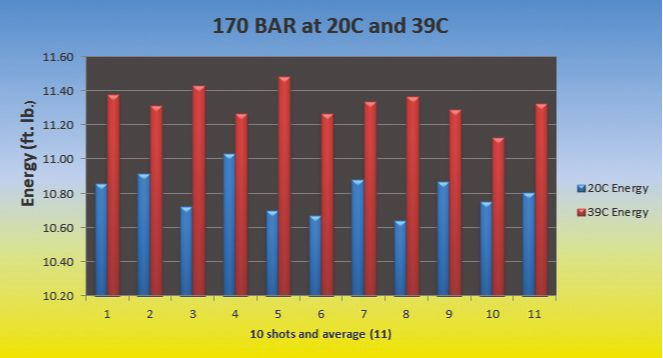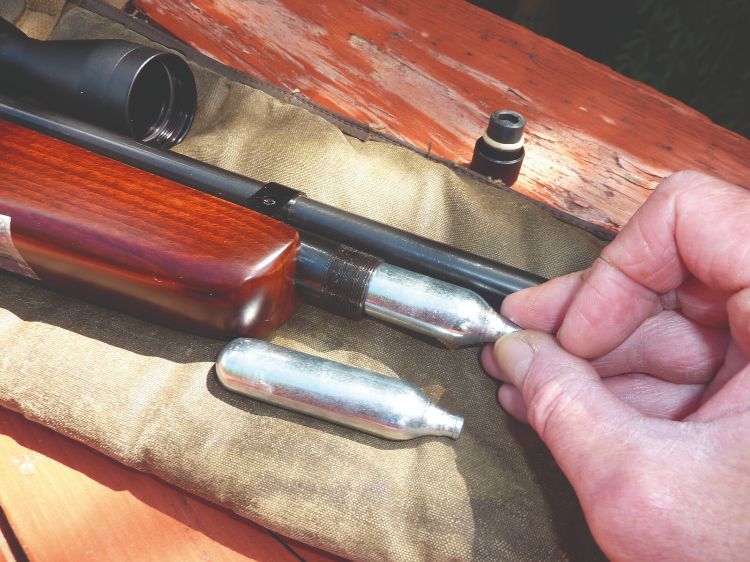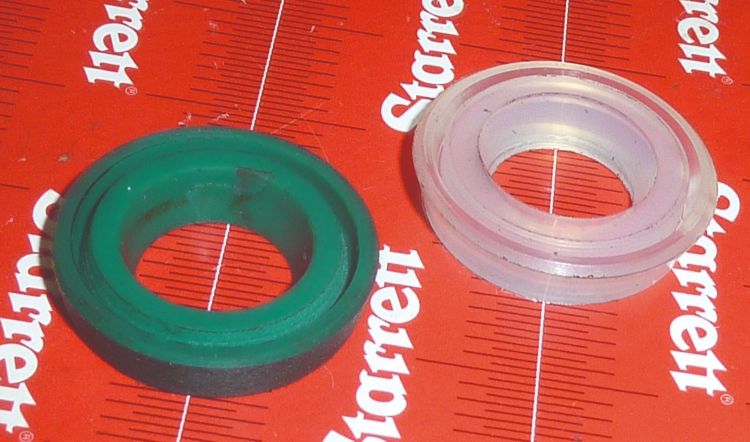I wrote this on 20th July 2022, the day after the UK recorded its highest-ever temperature of 40.3ºC, and three days after the UKAHFT held two rounds of its 2022 series the preceding Saturday and Sunday at Furnace Mill and Nomads HFT, respectively, when local temperatures peaked at just over 29ºC in the shade, and that, coupled with the heat from direct exposure of sunlight, was quite enough to cause some competitors a raft of issues.
What is Temperature?
Taking the temperature of a volume of gas, liquid or solid is our way of measuring its internal kinetic energy, and kinetic energy is a concept with which we are all familiar because kinetic energy is our measure of airgun performance. An airgun pellet’s kinetic energy – which many inappropriately refer to as ‘power’ – is a product of its weight (mass) and velocity, and the temperature of a gas, liquid or solid is a product of molecules, mass and velocity. In a nutshell, the higher the temperature, the faster the molecules are moving, the greater their energy, the better their ability to perform work.
We tend to think of temperature in terms of how it feels to us; if we were to step into a cold store with an air temperature of 0ºC on a hot summer day, with an ambient temperature of 30ºC, the difference would seem massive, but in terms of the internal energy of the air (the ability to do work), the difference is actually far less, and to understand why, we need to look at the temperature scale that is used for all scientific purposes, the Kelvin scale.
Zero degrees Celsius, the temperature at which liquid water freezes, is 273K on the Kelvin scale, and 30ºC is 303K (the temperature in Celsius plus 273), so stepping out of 30ºC air into 0ºC air is actually stepping from 303K to 273K, so it is only a drop of 10% in terms of the energy in the air. Let’s look at how that affects the air rifle, starting with the PCP.
 Hot PCPs
Hot PCPs
The important point to grasp is that the muzzle energy of a PCP varies pretty well in line with the temperature of its air in Kelvin; it’s not exact, but near enough.
The energy that powers the pellet exists in two forms; there is the potential energy that is a function of the air’s pressure and volume (PV energy), which becomes flow energy when the valve opens, and there is the air internal kinetic energy, which we measure as temperature. If you heat a PCP cylinder, the air pressure and PV energy rises, and so does the air internal energy, so the muzzle energy rises.
If a PCP produces a muzzle energy of 11 ft.lbs. when acclimatised at 20ºC (293K), then on a hot day when the rifle is acclimatised to 30ºC (303K), the muzzle energy could be nearer 11/293 x 303, which works out at 11.37 ft.lbs.
On the hottest day ever recorded in the UK, the muzzle energy could be nearer 11/293 x 313, or 11.75 ft.lbs. Those examples are both worst case scenarios, and the 30ºC figure in practice would probably be between 11.23 and 11.37 ft.lbs., the 40ºC figure between 11.47 and 11.75 ft.lbs. Perhaps the important point is that taking the simpler temperature ratio in Kelvin to calculate likely muzzle energy gives a safety margin to ensure that you stay within the law.
 Sunlight exposure
Sunlight exposure
Ambient temperature does not act alone in determining the temperature of the air in a PCP, though, because exposure to sunlight can cause the temperature of the rifle’s cylinder to rocket, and on the day when the record air temperature in the shade was 40.3ºC, the ground temperature was again a new record of 48ºC, and the cylinder of a PCP exposed to direct sunlight could be even hotter.
If the rifle that gave 11 ft.lbs. at 20ºC was exposed to the sun for long enough, the muzzle energy could easily rise to ‘too close to’, or ‘the wrong side of’ 12 ft.lbs. Not only could the rifle be illegal unless it was on a firearms certificate, but also arguably less important, the muzzle velocity could rise to the point at which all the aim points have shifted slightly.
Even if the doomsayers predictions of regular extreme summer heatwaves don’t come to fruition, and peak summer temperatures in the UK remain nearer 30ºC than 40ºC, leaving a PCP in direct sunlight for any length of time risks raising the temperature of the air in the cylinder sufficient to cause a small but potentially significant POI shift, so the best advice is to limit the time the rifle spends under sunlight by either keeping it in shade, or inside a gun slip, until you are ready to take a shot.
Hot Springer rifles
Whereas the muzzle energy of PCPs tends to rise as the ambient temperature of the air rises, the muzzle energy of springers tends to fall, the hotter they become, and the reason why is entirely different from the mechanism that causes PCPs energy to rise.
Unlike the molecules in a gas, which are free to vibrate, rotate or travel in a straight line until they collide with something, the molecules in a solid have very little space in which to move, so they vibrate as they collide with, and bounce off, their neighbouring molecules. Each molecule grabs a little bit more volume for itself, and as a whole, causes the solid to expand as it heats up, and that is exactly what happens in synthetic piston seals, and in the steel cylinder.
The molecules in the steel cylinder are more packed and tightly bound together than those of the seal, so the cylinder expands far less than the seal as temperature increases. The higher the temperature, the tighter the piston seal becomes in the cylinder, and the greater the friction between the two, which robs the piston of some of the energy from the expanding mainspring, and the result is a drop in muzzle velocity. Not all synthetic seals are affected to the same degree; seals that surround the locating stud or boss on the front of the piston (open faced seals) generally expand a lot less than seals that envelop the front of the piston (closed face seals) and, among closed face seals, some expand more than others according to the material they are made from.
 Muzzle velocity
Muzzle velocity
As an example of open and closed face seals, I tested my TX200 with the factory standard open face piston seal at 24ºC and 34ºC, and the higher temperature took around 1% off the muzzle velocity, which is neither here nor there, but some closed face seals can give 4% or more loss of muzzle velocity, which can be enough to alter aim points. Taking things to the extreme, I once heated a springer to over 50ºC by leaving it in direct sunlight under glass, and the first shot was over 40fps down on that rifle’s usual velocity, but the second and subsequent shots were just below normal. I don’t know exactly why this happened, but if your springer’s cylinder does become excessively hot, it’s worth putting a couple of pellets through it before any serious shooting.
One sure way to avoid temperature-related muzzle velocity variation is to use an ‘O’-ring as the seal, because the ‘O’-ring is so thin that any expansion or contraction with changes in temperature will be minute. BSA used ‘O’-ring piston seals for some years, but swapped to synthetic parachute seals after the company was taken over by Gamo, and a few people have reported good results with ‘O’-rings, but my attempts to get an ‘O’-ring seal working in my TX200 (reported in Airgun World, February, March and April 2022 issues) proved very frustrating, and I was unable to achieve the reliability I wanted.
The solution to using a springer in very hot weather is the same as for a PCP. Regulate the rifle’s temperature by keeping it out of direct sunlight in shaded areas, or in a gun slip, until the time comes to take a shot. If the piston seal in your rifle drops the muzzle energy to unacceptable levels in high temperature, then carefully sizing the seal to give an easier sliding fit in the expected temperatures should restore the muzzle energy, and I have suggested having summer- and winter-sized seals as a solution for people whose springers have particularly temperature sensitive piston seals.
 Scopes
Scopes
The metal components and glass lens elements in a scope contract and expand to a small degree with changes in temperature, but I have never known a scope to lose zero as a consequence. However, field target shooters who use high magnification scopes to range targets have widely reported that their scopes mis-range in very high temperatures. This range finding is achieved by winding the magnification up to reduce the depth of field, focusing on the target until the image is sharpest, then reading the range from a scale on the focus wheel.
Field target is shot out to 55 yards, and as the pellet approaches that sort of distance, it drops more with each successive yard, and accurate rangefinding is essential. If the scope mis-ranges in hot temperatures, the only solution I can think of is to focus on targets at measured ranges in those temperatures, and create a new ‘summer scale’ for the focus wheel.
You, And Me
Too much heat can be a killer – literally. Our bodies need to maintain a core temperature of 37ºC, and we have mechanisms to correct it if it becomes too low; shivering, and reducing blood flow to the extremities to minimise heat loss, or high; sweating, and increasing blood flow to the extremities to maximise heat loss, but these can only go so far, and if our core temperature drops too low, or rises too high, it’s curtains for us.
The temperature on the day of the UKAHFT shoot at Nomads may have been ‘only’ 29ºC, but that was recorded in the shade, and not only was the temperature in sunlight considerably higher, but any physical activity such as shooting an HFT course generates internal heat, too, and heat exhaustion, if not heat stroke, was a real consideration on the day. We (the club) set up drinks stations with plentiful water and squash at targets 8, 14 and 22, which enabled the competitors to take in water to replace fluid lost through sweating and in their breath, and also to cool their bodies from the inside. For this, we were thanked profusely.
What else can you do to keep cool, apart from drinking water and trying to stay in the shade? Your body pumps blood near to your skin as part of its cooling mechanism, so apply a damp cloth to your forearms and face to help disperse heat as the water evaporates. Wear a lightweight sunhat to keep your head shaded, and I am not above soaking my hat with water, again to cool me as the water evaporates.